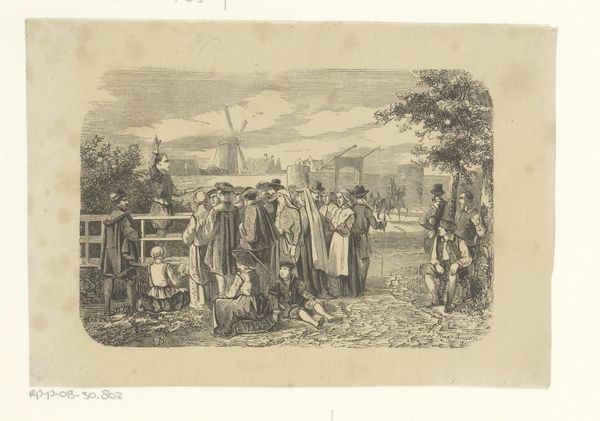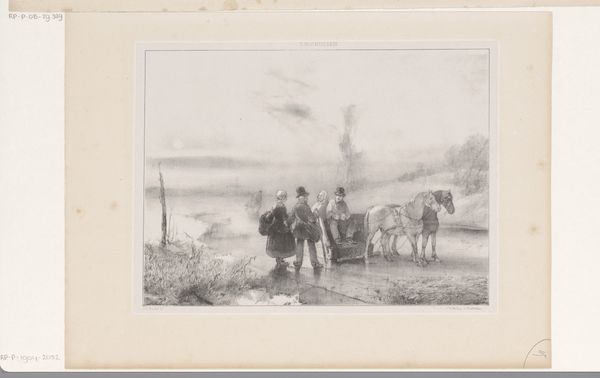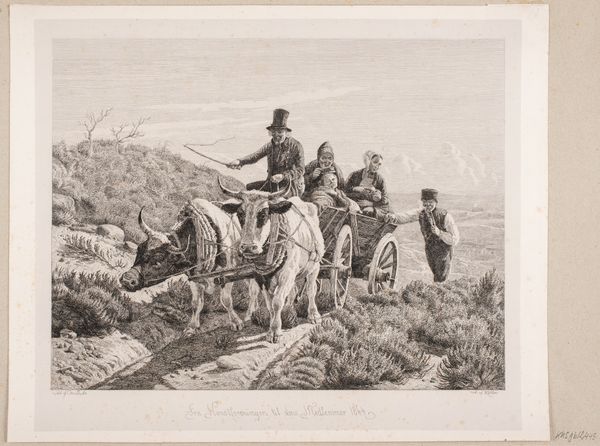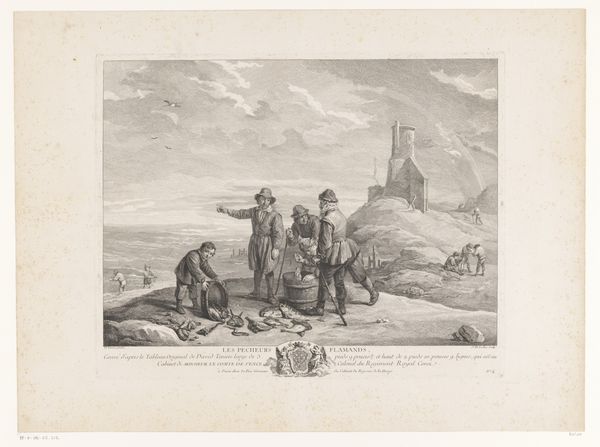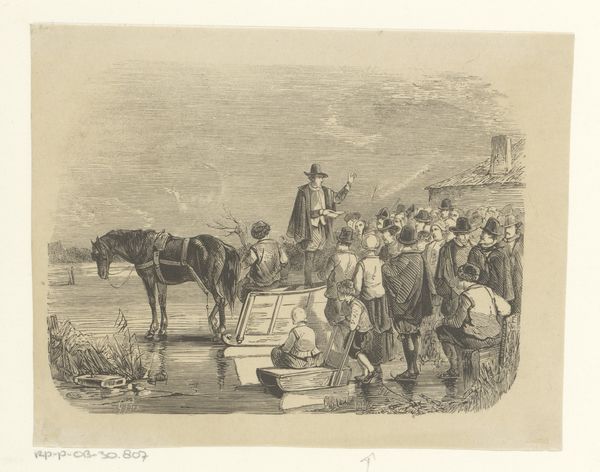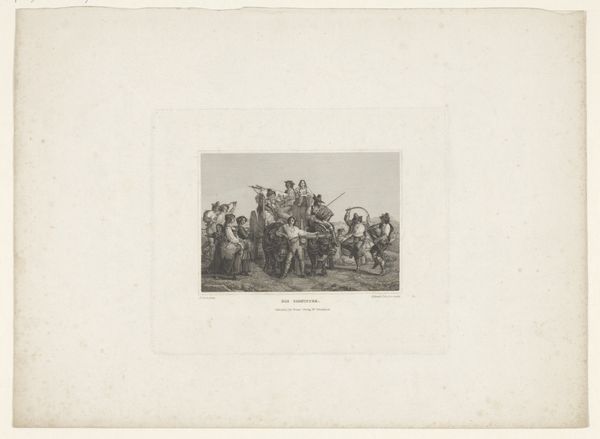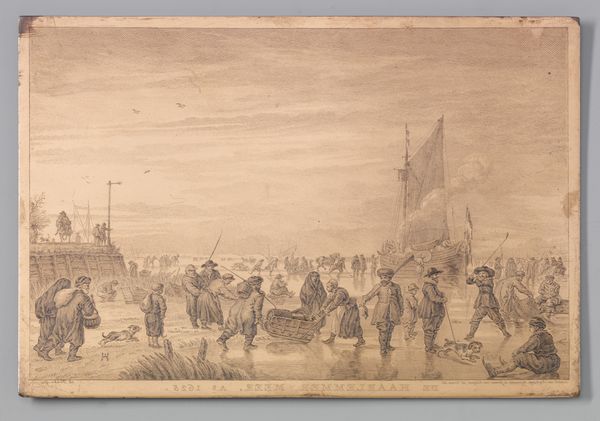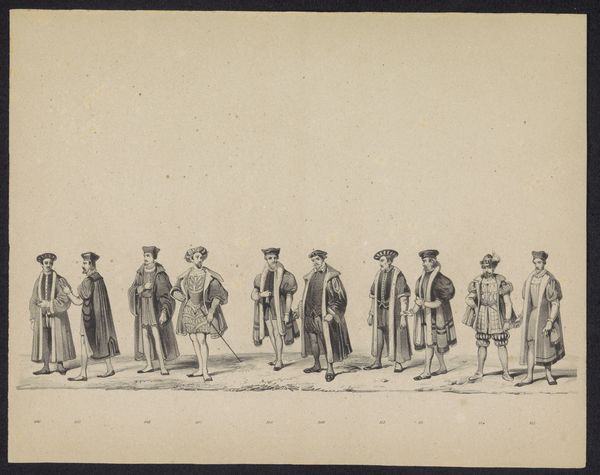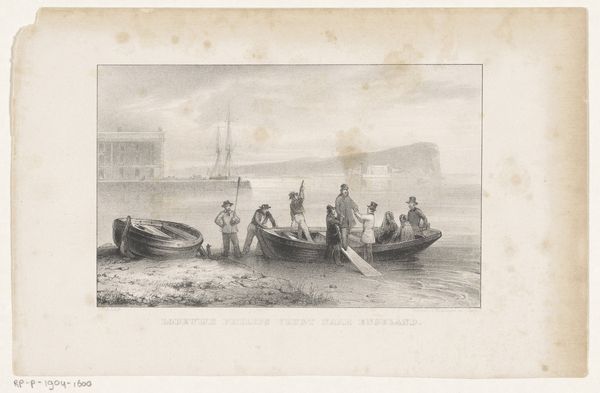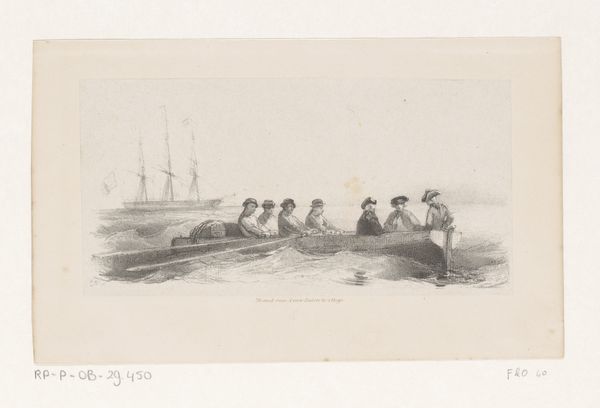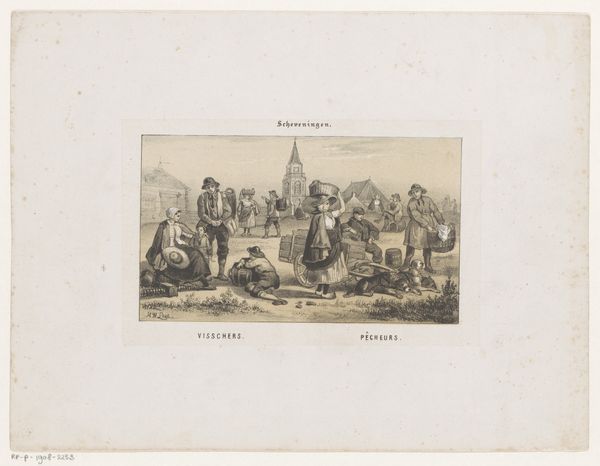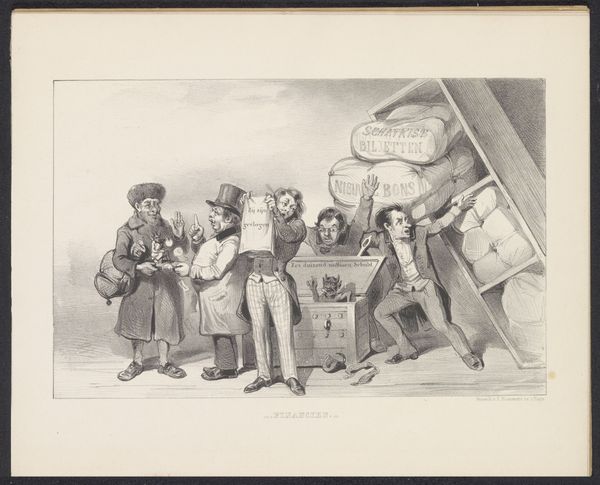
print, engraving
# print
#
pencil sketch
#
figuration
#
romanticism
#
line
#
cityscape
#
genre-painting
#
engraving
Dimensions: 40 mm (height) x 107 mm (width) (billedmaal)
Curator: This is Waldemar Bøhme's "Fra Monte Pincio", a print created sometime between 1777 and 1877, held here at the SMK. Editor: My initial reaction is a quiet curiosity, almost melancholic. The monochromatic palette amplifies the feeling of gazing into a bygone era. You're really drawn to the human relationships here as well. Curator: Exactly! The location itself, Monte Pincio, held significance as a vantage point—a place to see and be seen. Bøhme uses that site to stage social dynamics and class distinctions of the period, but that also provides insight into more generalized humanistic issues and concepts as well. Consider, for example, the representation of women as spectators but also objects of spectatorship within that power structure. Editor: Looking closely at Bøhme’s process is helpful here. The detailed engraving—all those tiny, intentional lines to create tone and texture. Think of the labor involved. It transforms this view into a commodity, multiplied and circulated. Also how printmaking enabled a wider audience, distributing both knowledge of, and access to, art and places. Curator: Precisely, printmaking opened up these spaces, but through the specific lens of someone like Bøhme. And that necessarily injects the social constructs present at the time, such as ideas around gender and class, with all their incumbent constraints and possibilities. Even their postures—their placement within the scene suggests specific social and relational expectations. Editor: Yes, even the contrast in the way people are clothed, it says so much! From the detailed folds of a woman's dress to the simple lines defining a working man's coat, material culture conveys societal roles, power and labor here. I want to know where those raw materials for ink, paper and plates came from; whose labor processed them? It pushes us to look beyond the final image to its production history and embedded labor politics. Curator: It encourages us to consider what gets seen, whose voices are centered, and whose are systematically excluded by the work's narrative, right? Looking at this today reminds me how important it is to be skeptical of whose point of view is being normalized, and what this can tells us more broadly. Editor: And for me, seeing the labor that underlies what we often consume as "art," highlights questions about commodification that continue today. Curator: An important set of insights that help us recognize where our present and our past intersect. Editor: Definitely food for thought as we look forward, as well as reflect backwards.
Comments
No comments
Be the first to comment and join the conversation on the ultimate creative platform.
